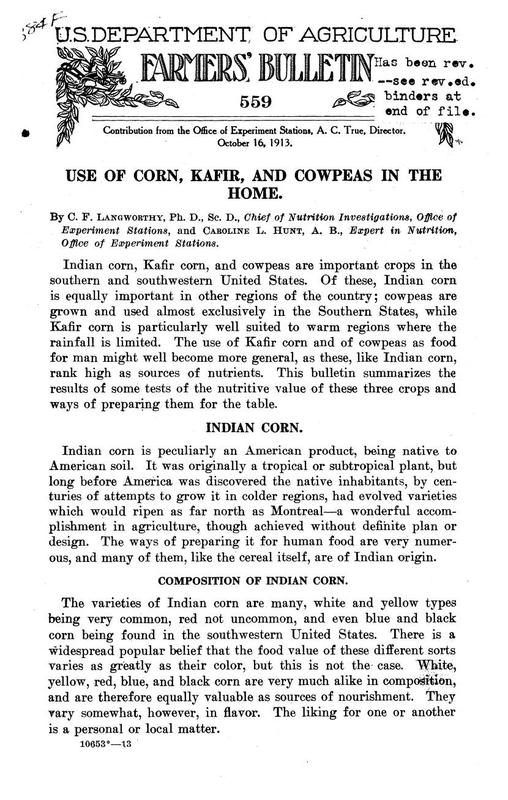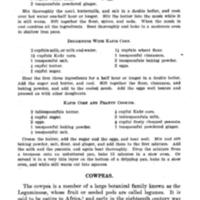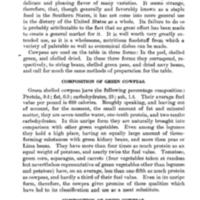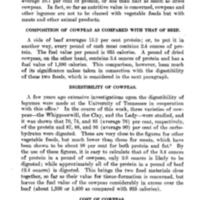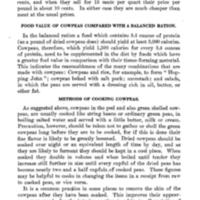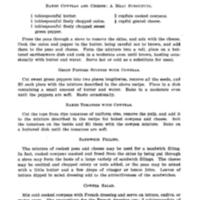Use of Corn, Kafir, and Cowpeas in the Home
Date
1913
Excerpt
The cowpea is a member of a large botanical family known as the Leguminosse, whose fruit or seeded pods are called legumes. It is said to be native to Africa and early in the eighteenth century was introduced into the United States by way of the West Indies. Gradually it spread northward and late in the century we have record of its cultivation as an experimental crop on George Washington's farm in Virginia. Because of the great length of time it requires to reach maturity, it can not be raised to mature its seed in the Northern States. In the South, however, it is cultivated extensively as a forage crop, for fodder, and also for human food. A large number of varieties with seeds of many shapes, sizes, and colors have been identified and named.
The cowpea is distinguished among the legumes for the peculiarly delicate and pleasing flavor of many varieties. It seems strange, therefore, that, though generally and favorably known as a staple food in the Southern States, it has not come into more general use in the dietary of the United States as a whole. Its failure to do so is probably attributable to the fact that no great effort has been made to create a general market for it. It is well worth very greatly extended use, as it is a wholesome, nutritious foodstuff from which a variety of palatable as well as economical dishes can be made.
Cowpeas are used on the table in three forms: In the pod, shelled green, and shelled dried. In these three forms they correspond, respectively, to string beans, shelled green peas, and dried navy beans, and call for much the same methods of preparation for the table.
The cowpea is distinguished among the legumes for the peculiarly delicate and pleasing flavor of many varieties. It seems strange, therefore, that, though generally and favorably known as a staple food in the Southern States, it has not come into more general use in the dietary of the United States as a whole. Its failure to do so is probably attributable to the fact that no great effort has been made to create a general market for it. It is well worth very greatly extended use, as it is a wholesome, nutritious foodstuff from which a variety of palatable as well as economical dishes can be made.
Cowpeas are used on the table in three forms: In the pod, shelled green, and shelled dried. In these three forms they correspond, respectively, to string beans, shelled green peas, and dried navy beans, and call for much the same methods of preparation for the table.
Title
Use of Corn, Kafir, and Cowpeas in the Home
File(s)
Use of Corn, Kafir, and Cowpeas in the Home 1.jpg
(image/jpeg)
Use of Corn, Kafir, and Cowpeas in the Home 2.jpg
(image/jpeg)
Use of Corn, Kafir, and Cowpeas in the Home 3.jpg
(image/jpeg)
Use of Corn, Kafir, and Cowpeas in the Home 4.jpg
(image/jpeg)
Use of Corn, Kafir, and Cowpeas in the Home 5.jpg
(image/jpeg)
Use of Corn, Kafir, and Cowpeas in the Home 6.jpg
(image/jpeg)
Use of Corn, Kafir, and Cowpeas in the Home 7.jpg
(image/jpeg)
 An official website of the United States government.
An official website of the United States government.


